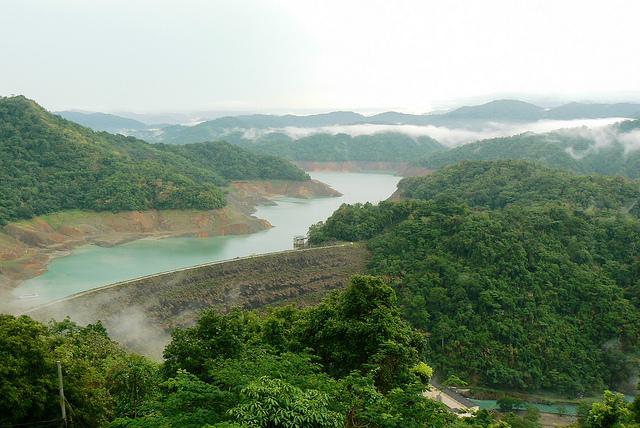
Angat Hydroelectric Power Plant is one of the country’s largest dams. It supplies potable water and energy to Metro Manila and nearby areas. Surrounded by lush greens, this place is also ideal for fishing, boating and hunting. It generates electricity and could be a source of flood in case of an emergency release of dam water during heavy rains and typoons.
It is another potential tourist destination; it is the biggest hydroelectric plant that the National Power Corporation (NPC) has ever constructed in the entire Philippines. The 37-kilometer reservoir of this hydroelectric plant is a natural wonder covered with a virgin forest – a nest for various wildlife. It has a cool climate. During nighttime, it is virtually a city situated in the wilds.
Geography:
The Angat River Basin is situated on the southeastern part of Central Luzon, originating on the slopes of the Sierra Madre Mountains. It has a catchment area of 781 km2 and estimated annual run-off of 873 MCM collecting from the main tributaries of Matulid and Maputi rivers. The watershed area is bounded by Umiray River in the northeast, the Kanan River in the southeast, and the Marikina River in the south. The river defines a huge semi-elliptical curve of about 12 kilometers long near Sitio Bitbit in Norzagaray, Bulacan Province. At a few kilometers downstream, the river emerges from the mountain, flowing in a westerly course across the lowland plains of Bulacan before emptying its water into Manila Bay.

The hilly and mountainous of Angat Dam
Brief history:
As early as 1904, the economic potential of the Angat River has been recognized and the government started a sustained and systematic effort to harness this potential for the benefit of millions of people living in the central plains of Luzon. The development of Angat River started with the construction of Bustos Dam in 1926 for the purpose of irrigating about 27,000 hectares of riceland in the Lower Angat River Basin and Pampanga River Delta.
The Angat Reservoir was originally conceived in 1939 as a run-of-river hydroelectric plant primarily for power development with a comparatively low capacity commensurate with the limited demand for power before the last world war. The rapid strides made in Post-War industrialization and the phenomenal growth of Manila and its neighboring communities had changed the concept of the development. The river was developed in its optimum capacity by the construction of a high dam in 1967 and impounds its water in the reservoir thus controlling and seasonally regulates the stream flow. Commissioning of the main power units No. 3 and No. 4 was in August 1968.
After the commissioning of auxiliary power unit No. 3 in October 1978, construction of the Ipo Diversion Dam was started in December 1978 and completed in January 1984. The Ipo Dam is located downstream of the Angat Multi-Purpose Dam below the confluence with the Ipo River. The purpose of the Ipo Dam is to divert water from Angat and Ipo rivers to the La Mesa Dam Reservoir and La Mesa Treatment Plant in Novaliches, Quezon City, Metro Manila. At present, the Angat Reservoir is a multipurpose dam for hydropower, water supply, irrigation and flood control. It was constructed, and operated by the National Power Corporation (NPC). Although its primary uses are water supply and irrigation, its capacity for the main and auxiliary powerhouse is 200,000 kW and 18,000 kW, respectively. However, all these plant operations depend on the requirements of irrigation and water supply, which are released through the Main Turbines and Auxiliary turbines, respectively.
Angat: Ecological Spots
The Angat Hydroelectric Dam is a popular ecological tourist attraction. The town of Angat is also known for its eco-friendly, clean and safe destination. The hilly and mountainous of the town is an ideal place for fishing, boating, hunting and other eco-tourism activities. The main thrust of the Bulacan government is to encourage more investors which will provide more employment for the people, like in the healthcare and education industries. Angat Dam is off-limits to the general public but many tourists are still getting ahead just to explore this structure that shows man’s effort to harness the forces of nature.
The hilltops of Angat are dubbed as the “Bagiuo of Bulacan”; the breathtaking scenic view of the Sierra Madre Range does not fail to mesmerize every tourist who visits the place.










